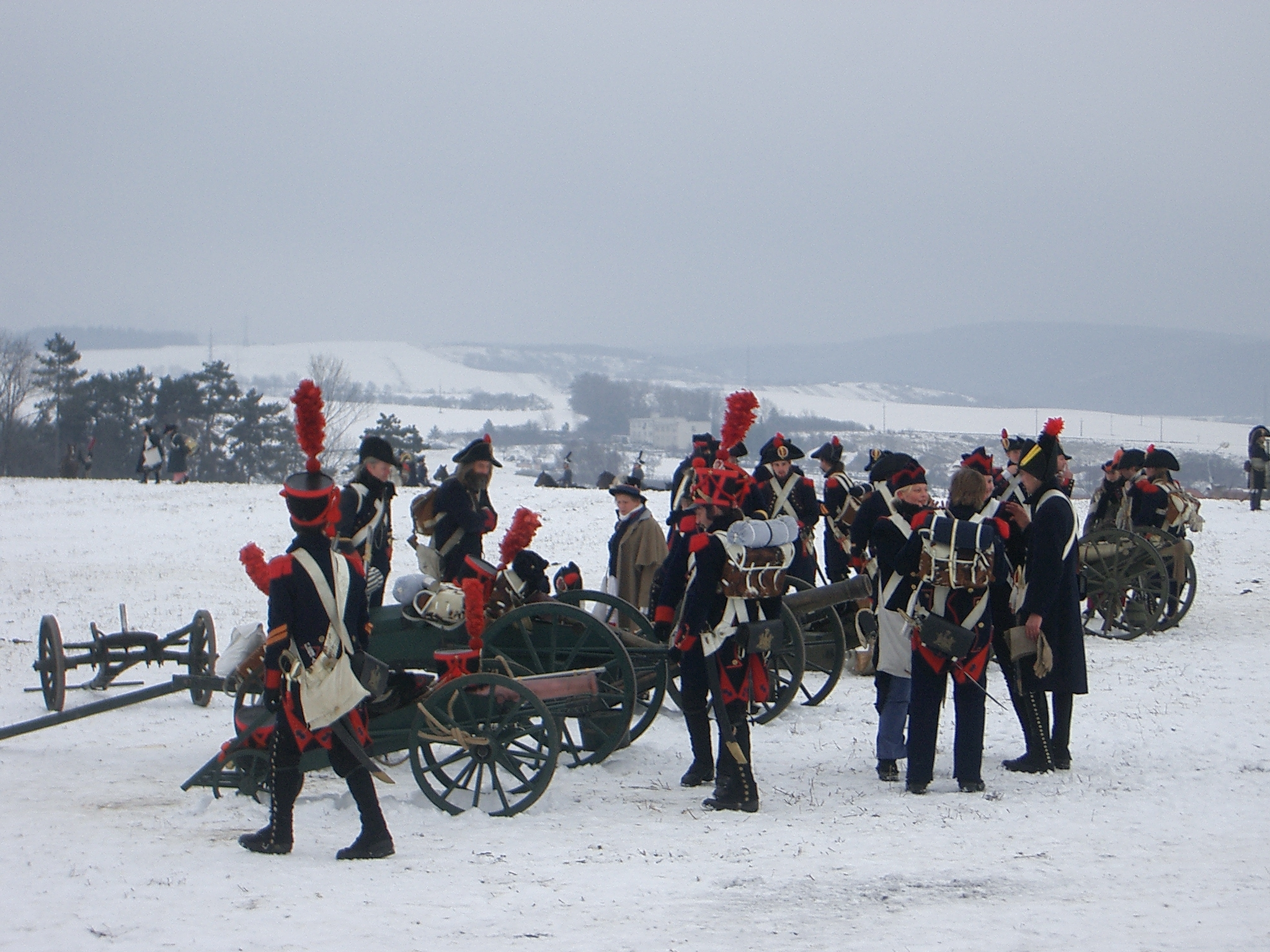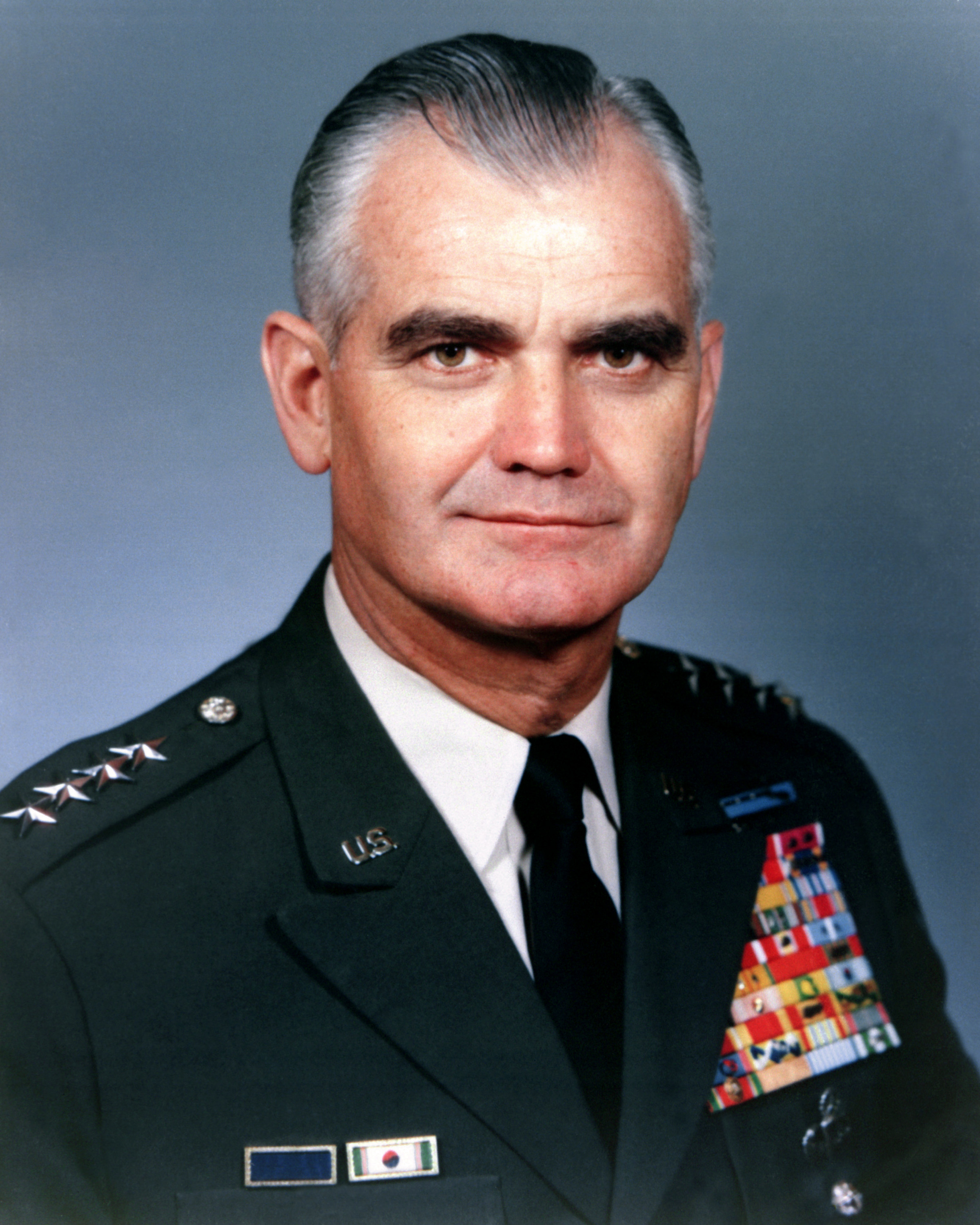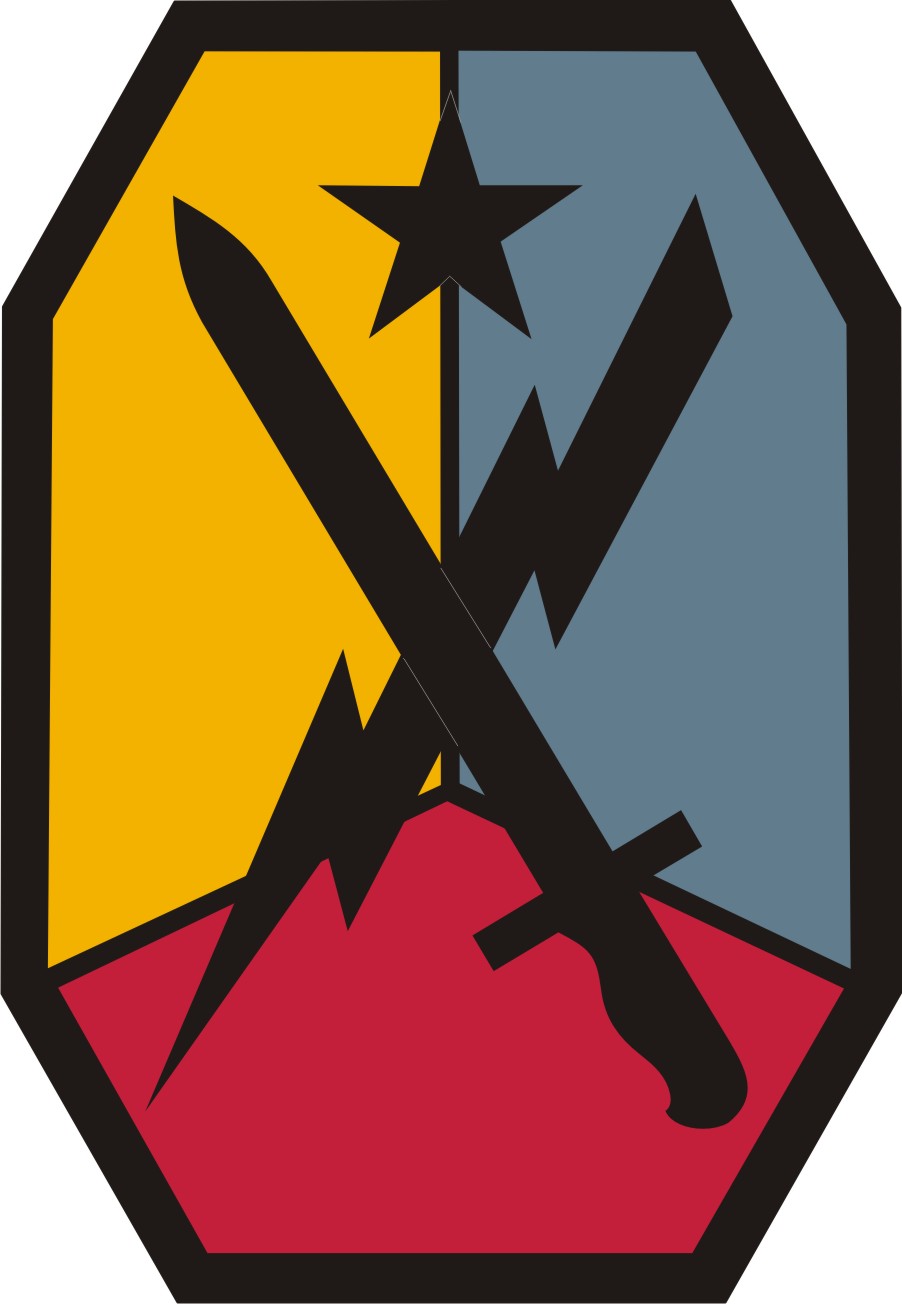|
83rd Field Artillery Regiment (United States)
The 83rd Field Artillery Regiment is a regiment of the Field Artillery Branch of the United States Army. The 1st Battalion, 83rd Artillery was formed in 1966 at Fort Sill, Oklahoma. The battalion departed for Vietnam in October 1966 and remained there until 1971 when the unit was stood down. In Vietnam, the 83rd was originally at Bear Cat, Nui Dat and Xuân Lộc but later moved to many other locations in Vietnam. The battalion was associated with XXIV Corps and the 54th and 108th Artillery Groups while in Vietnam. From 1966-1969 A Battery, 1st Battalion, 83rd Field Artillery was located at the 1st Australian Task Force base at Nui Dat, Phước Tuy Province and supported Australian and New Zealand operations in the region. Lineage Constituted 1 July 1916 in the Regular Army as the 25th Cavalry. Organized 5 June 1917 at Fort D.A. Russell (Wyoming). Converted and redesignated 1 November 1917 as the 83rd Field Artillery. Assigned 17 December 1917 to the 8th Infantry ... [...More Info...] [...Related Items...] OR: [Wikipedia] [Google] [Baidu] |
Field Artillery
Field artillery is a category of mobile artillery used to support armies in the field. These weapons are specialized for mobility, tactical proficiency, short range, long range, and extremely long range target engagement. Until the early 20th century, field artillery were also known as foot artillery, for while the guns were pulled by beasts of burden (often horses), the gun crews would usually march on foot, thus providing fire support mainly to the infantry. This was in contrast to horse artillery, whose emphasis on speed while supporting cavalry units necessitated lighter guns and crews riding on horseback. Whereas horse artillery has been superseded by self-propelled artillery, field artillery has survived to this day both in name and mission, albeit with motor vehicles towing the guns (this towed artillery arrangement is often called mobile artillery), carrying the crews and transporting the ammunition. Modern artillery has also advanced to rapidly deployable wheeled a ... [...More Info...] [...Related Items...] OR: [Wikipedia] [Google] [Baidu] |
Camp Fremont
Camp Fremont was a World War I-era military base located near Palo Alto, California. Construction started in July 1917 and the post closed in September, 1919. The post was named for John C. Frémont, a US Army officer and government official who was prominent in California during the 1850s. Creation of post Camp Fremont was constructed on vacant land in and around the area of Palo Alto and Menlo Park. Camp Fremont consisted of slightly more than and contained approximately 1,125 structures, mostly temporary buildings constructed of wood. During preparation for possible entry into World War I, the U.S. Army determined a need existed for a post on the west coast of the United States to train National Guard units for combat. Construction started on July 24, 1917, and the new installation was named in honor of Major General John C. Fremont, an early hero of California. World War I Camp Fremont served as a training site for the National Guard's 41st Infantry Division, which inc ... [...More Info...] [...Related Items...] OR: [Wikipedia] [Google] [Baidu] |
Tet Offensive
The Tet Offensive was a major escalation and one of the largest military campaigns of the Vietnam War. It was launched on January 30, 1968 by forces of the Viet Cong (VC) and North Vietnamese People's Army of Vietnam (PAVN) against the forces of the South Vietnamese Army of the Republic of Vietnam (ARVN), the United States Armed Forces and their allies. It was a campaign of surprise attacks against military and civilian command and control centers throughout South Vietnam. The name is the truncated version of the Lunar New Year festival name in Vietnamese, Tết Nguyên Đán, with the offense chosen during a holiday period as most ARVN personnel were on leave. The purpose of the wide-scale offensive by the Hanoi Politburo was to trigger political instability, in a belief that mass armed assault on urban centers would trigger defections and rebellions. The offensive was launched prematurely in the late night hours of 30 January in the I and II Corps Tactical Zones of South V ... [...More Info...] [...Related Items...] OR: [Wikipedia] [Google] [Baidu] |
Combat Arms Regimental System
The Combat Arms Regimental System (CARS), was the method of assigning unit designations to units of some of the combat arms branches of the United States Army, including Infantry, Special Forces, Field Artillery, and Armor, from 1957 to 1981. Air Defense Artillery was added in 1968. CARS was superseded by the U.S. Army Regimental System (USARS) in 1981, although the term "Regiment" was never appended to the official name or designation of CARS regiments, and was not added to USARS regiments until 2005. History Before the adoption of CARS, there was no satisfactory means of maintaining the active life of the combat arms organizations. Whenever the nation entered periods of military retrenchment, units were invariably broken up, reorganized, consolidated, or disbanded. During periods of mobilization, large numbers of new units were created. Changes in weapons and techniques of warfare produced new types of units to replace the old ones. As a result, soldiers frequently served in ... [...More Info...] [...Related Items...] OR: [Wikipedia] [Google] [Baidu] |
Camp Patrick Henry
Camp may refer to: Outdoor accommodation and recreation * Campsite or campground, a recreational outdoor sleeping and eating site * a temporary settlement for nomads * Camp, a term used in New England, Northern Ontario and New Brunswick to describe a cottage * Military camp * Summer camp, typically organized for groups of children or youth * Tent city, a housing facility often occupied by homeless people or protesters Areas of imprisonment or confinement * Concentration camp * Extermination camp * Federal prison camp, a minimum-security United States federal prison facility * Internment camp, also called a concentration camp, resettlement camp, relocation camp, or detention camp * Labor camp * Prisoner-of-war camp ** Parole camp guards its own soldiers as prisoners of war Gatherings of people * Camp, a mining community * Camp, a term commonly used in the titles of technology-related unconferences * Camp meeting, a Christian gathering which originated in 19th-century America ... [...More Info...] [...Related Items...] OR: [Wikipedia] [Google] [Baidu] |
9th Armored Division (United States)
The 9th Armored Division (the "Phantom Division") was an armored division of the United States Army during World War II. In honor of their World War II service, the 9th was officially nicknamed the "Phantom Division." The 9th Armored Division was cited for extraordinary heroism and gallantry in combat in the vicinity of Waldbillig and Savelborn, Luxembourg from 16–22 December 1944 during which they repulsed constant and determined attacks by an entire German division. Outnumbered five to one, with its infantry rifle companies surrounded for most of the time, clerks, cooks, mechanics, drivers and others manned the final defensive line. Supported by the outstandingly responsive and accurate fire of its artillery battalion, this widely dispersed force stopped every attack for six days until its surrounded infantry were ordered to fight their way back to them. This staunch defense disrupted the precise German attack schedule and thus gave time for the United States III and ... [...More Info...] [...Related Items...] OR: [Wikipedia] [Google] [Baidu] |
Fort Benning
Fort Benning is a United States Army post near Columbus, Georgia, adjacent to the Alabama–Georgia border. Fort Benning supports more than 120,000 active-duty military, family members, reserve component soldiers, retirees and civilian employees on a daily basis. It is a power projection platform, and possesses the capability to deploy combat-ready forces by air, rail, and highway. Fort Benning is the home of the United States Army Maneuver Center of Excellence, the United States Army Armor School, United States Army Infantry School, the Western Hemisphere Institute for Security Cooperation (formerly known as the School of the Americas), elements of the 75th Ranger Regiment, the 1st Security Force Assistance Brigade, and other tenant units. It is named after Henry L. Benning, a brigadier general in the Confederate States Army during the Civil War. Fort Benning is one of ten U.S. Army installations named for former Confederate generals. The National Defense Authorization Act f ... [...More Info...] [...Related Items...] OR: [Wikipedia] [Google] [Baidu] |
Fort Bragg
Fort Bragg is a military installation of the United States Army in North Carolina, and is one of the largest military installations in the world by population, with around 54,000 military personnel. The military reservation is located within Cumberland County, North Carolina, Cumberland and Hoke County, North Carolina, Hoke counties, Info on high school assignments also stated in this document/ref> and borders the towns of Fayetteville, North Carolina, Fayetteville, Spring Lake, North Carolina, Spring Lake, and Southern Pines, North Carolina, Southern Pines. It was also a census-designated place in the 2000 census, during which a residential population of 29,183 was identified. It is named for native North Carolinian Confederate States of America, Confederate Four-star rank, General Braxton Bragg, who had previously served in the United States Army in the Mexican-American War. Fort Bragg is one of List of U.S. Army installations named for Confederate soldiers, ten United States Ar ... [...More Info...] [...Related Items...] OR: [Wikipedia] [Google] [Baidu] |
4th Infantry Division (United States)
The 4th Infantry Division is a division of the United States Army based at Fort Carson, Colorado. It is composed of a division headquarters battalion, three brigade combat teams (two Stryker and one armor), a combat aviation brigade, a division sustainment brigade, and a division artillery. The 4th Infantry Division's official nickname, "Ivy", is a play on words of the Roman numeral ''IV'' or 4. Ivy leaves symbolize tenacity and fidelity which is the basis of the division's motto: "Steadfast and Loyal". The second nickname, "Iron Horse", has been adopted to underscore the speed and power of the division and its soldiers. World War I The 4th Division was organized at Camp Greene, North Carolina on 10 December 1917 under the command of Maj. Gen. George H. Cameron. It was here they adopted their distinctive insignia, the four ivy leaves. The ivy leaf came from the Roman numerals for four (IV) and signified their motto "Steadfast and Loyal". The division was organized as p ... [...More Info...] [...Related Items...] OR: [Wikipedia] [Google] [Baidu] |
Camp Benning
Fort Benning is a United States Army post near Columbus, Georgia, adjacent to the Alabama–Georgia border. Fort Benning supports more than 120,000 active-duty military, family members, reserve component soldiers, retirees and civilian employees on a daily basis. It is a power projection platform, and possesses the capability to deploy combat-ready forces by air, rail, and highway. Fort Benning is the home of the United States Army Maneuver Center of Excellence, the United States Army Armor School, United States Army Infantry School, the Western Hemisphere Institute for Security Cooperation (formerly known as the School of the Americas), elements of the 75th Ranger Regiment, the 1st Security Force Assistance Brigade, and other tenant units. It is named after Henry L. Benning, a brigadier general in the Confederate States Army during the Civil War. Fort Benning is one of ten U.S. Army installations named for former Confederate generals. The National Defense Authorization Act fo ... [...More Info...] [...Related Items...] OR: [Wikipedia] [Google] [Baidu] |
8th Infantry Division (United States)
The 8th Infantry Division, ("Pathfinder") was an infantry division of the United States Army during the 20th century. The division served in World War I, World War II, and Operation Desert Storm. Initially activated in January 1918, the unit did not see combat during World War I and returned to the United States. Some units would serve in the American Expeditionary Force to Siberia. Activated again on 1 July 1940 as part of the build-up of military forces prior to the United States' entry into World War II, the division saw extensive action in the European Theatre of Operations. Following World War II, the division was moved to West Germany, where it remained stationed at the Rose Barracks in Bad Kreuznach until it was inactivated on 17 January 1992.http://www.fatherswar.com/8thinfdiv/70s90s/inactivation_orders.jpg Inactivation Orders History World War I *Activated: January 1918 *Overseas: November 1918 *Commanders: **Col. Elmore F. Taggart (5 January – 14 February 1918) ** C ... [...More Info...] [...Related Items...] OR: [Wikipedia] [Google] [Baidu] |







